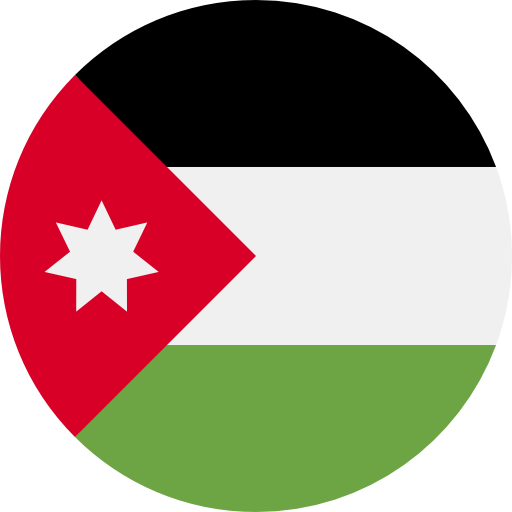About JO

Location
Jordan is a country located in the Middle East, bordered by Saudi Arabia to the south and east, Iraq to the northeast, Syria to the north, and Israel and the West Bank to the west.
Capital
The capital city of Jordan is Amman.
Population
As of the latest estimates, Jordan has a population of approximately 10.7 million people.
Area
Jordan covers a total land area of about 89,342 square kilometers (34,495 square miles).
Official Language
The official language of Jordan is Arabic.
Government
Jordan is a constitutional monarchy with a parliamentary system. The King of Jordan, currently King Abdullah II, serves as the head of state, while the Prime Minister is the head of government.
Monarchy
The Hashemite Kingdom of Jordan has been ruled by the Hashemite dynasty since the country's independence in 1946.
Currency
The currency of Jordan is the Jordanian Dinar (JOD).
Religion
Islam is the predominant religion in Jordan, with the majority of the population adhering to Sunni Islam. There are also Christian communities in the country, primarily Greek Orthodox and Roman Catholic.
Economy
Jordan's economy is considered to be an emerging market. The country relies heavily on foreign aid, tourism, and remittances from Jordanians working abroad. Key industries include phosphate mining, agriculture, manufacturing, and services.
Tourism
Jordan is known for its historical and cultural sites, including the ancient city of Petra, the Dead Sea, Jerash, and the desert landscapes of Wadi Rum. Tourism is a significant contributor to the country's economy.
Geography
Jordan is characterized by diverse landscapes, including desert regions, fertile valleys, and the Jordan River. The Dead Sea, located at the lowest point on Earth, is a popular tourist destination known for its high salt content and buoyant waters.
Refugees
Jordan has been host to a large number of refugees, including Palestinians, Iraqis, and Syrians, fleeing conflicts in their home countries. This has put pressure on the country's resources and infrastructure.
Stability
Jordan is considered to be one of the most stable countries in the Middle East, despite its proximity to conflict zones. The government has maintained a policy of neutrality and has played a role in regional peace initiatives.

National Items of Jordan
Arabian Oryx
The Arabian Oryx (Oryx leucoryx) is the national animal of Jordan. Known for its striking appearance and adaptability to harsh desert environments, it symbolizes resilience, survival, and the natural heritage of the country.
Black Iris
The Black Iris (Iris nigricans) is the national flower of Jordan. Its rare and beautiful blooms represent the unique natural beauty and biodiversity of Jordan.
Olive Tree
The Olive Tree (Olea europaea) is significant in Jordanian culture and is considered a national symbol. It represents peace, prosperity, and the agricultural heritage of the country.
Petra
Petra, an ancient city carved into red sandstone cliffs, is a UNESCO World Heritage Site and one of the New Seven Wonders of the World. It symbolizes the rich historical and architectural heritage of Jordan.
Mansaf
Mansaf is a traditional Jordanian dish made with lamb, rice, and a fermented dried yogurt sauce called jameed. It represents the rich culinary traditions and hospitality of Jordanian culture.
Jordanian Dinar (JOD)
The Jordanian Dinar (JOD) is the currency of Jordan. It symbolizes the country's economic stability and financial system.
Keffiyeh
The Keffiyeh, a traditional Jordanian headdress, is often red and white checked. It symbolizes Jordanian cultural heritage, national identity, and traditional attire.
Dead Sea
The Dead Sea, the lowest point on Earth, is known for its high salinity and therapeutic properties. It symbolizes the unique natural features and tourism appeal of Jordan.
King Abdullah Mosque
The King Abdullah Mosque in Amman is a significant religious and architectural landmark. It symbolizes the Islamic heritage and modern architectural achievements of Jordan.
Falcon
The Falcon is a symbol of power, grace, and hunting prowess in Jordan. It represents the country's Bedouin heritage and the traditional practice of falconry.
Wadi Rum
Wadi Rum, also known as the Valley of the Moon, is a desert landscape famous for its stunning rock formations and red sand. It symbolizes the natural beauty and adventure tourism of Jordan.
Nabataean Script
The Nabataean script, used by the ancient Nabataeans, is an important part of Jordan's historical heritage. It symbolizes the rich linguistic and cultural history of the region.

This anthem is often played during official ceremonies and events in Jordan to honor the King and express pride in the count
The national anthem of Jordan is called "السلام الملكي الأردني" (As-Salam al-Malaki al-Urduni) in Arabic, which translates to "The Royal Anthem of Jordan" in English. Here are the lyrics in Arabic along with an English translation:
السلام الملكي الأردني
عاش المليك بنا السنين
دايما فخرنا وعزنا
أبا نحيي أردننا
Long live the King for the years
And may our country remain a pride
And may the land of Jordan remain forever a pride


